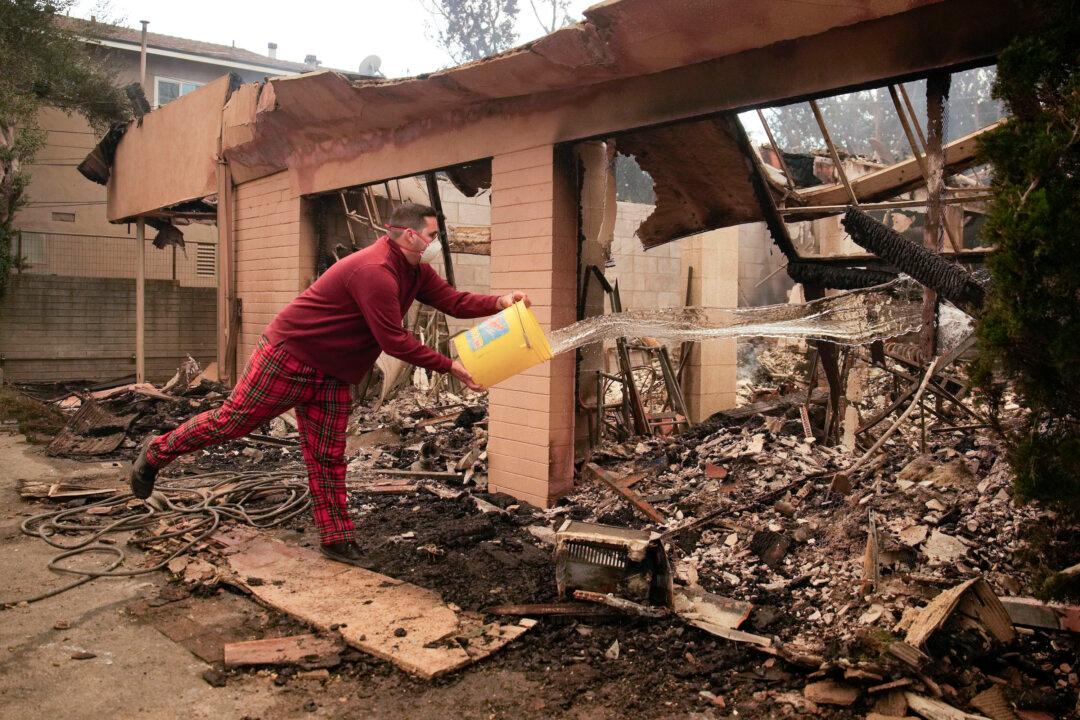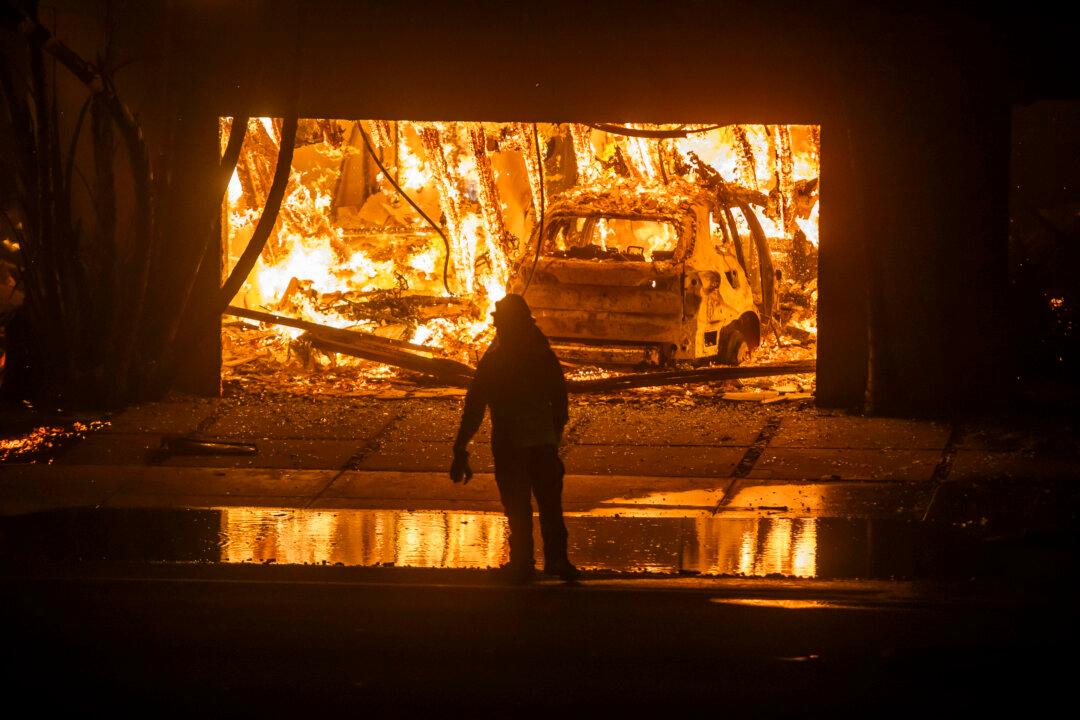Shares of insurance and utility companies exposed to the devastating California wildfires plummeted during the trading session on Jan. 10.
Mercury General Corp, a multiple-line insurance firm, led the losses on Friday, crashing about 20 percent.
Shares of Allstate tumbled 7 percent, Chubb declined 3 percent, and American International Group (AIG) dipped 1 percent.
The S&P Insurance Select Industry dropped 3 percent.
Utility stocks also came under pressure toward the end of the trading week.
Pacific Gas and Electric (PG&E) Corp., which serves Northern California and endured more than $30 billion in legal claims in past wildfires, tanked 10 percent.
Edison International, the parent company of Southern California Edison (SCE) that services Los Angeles, fell 5 percent. The company stated that its equipment was not responsible for the disaster.
The company confirmed that it is conducting a review and noted that customers may experience several days of outages amid unsafe conditions for electric power operations.
Losses Quickly Mounting
Experts warn that current wildfires could become the costliest in the state’s history.Updated preliminary estimates from AccuWeather suggest that the total damage and economic loss from the destructive fires could be as high as $150 billion. This would represent about 4 percent of California’s annual GDP.
The catastrophe emphasized the state’s worsening insurance crisis, says Jonathan Porter, AccuWeather’s chief meteorologist.
“This wildfire disaster is going to be yet another major challenge for the insurance industry, and for home and business owners who are struggling to secure adequate insurance coverage in high-risk areas,” Porter said in a statement emailed to The Epoch Times.
According to JPMorgan Chase analysts, insured losses already exceed $20 billion, up from the initial Jan. 9 projection of $10 billion. The estimates could be higher if the fires are not contained.
“We expect the vast majority of losses stemming from the wildfires to be concentrated in homeowners’ insurance and a significantly lesser amount in commercial fire, followed by personal auto,” JPMorgan analysts said in a note emailed to The Epoch Times on Jan. 10.

If the fires spread beyond nonresidential areas in the region, there could be higher losses in commercial coverage, the bank analysts added.
Other firms have estimated insurance losses in the same vicinity, ranging from $10 billion to $20 billion.
Diane Delaney, executive director of the Private Risk Management Association, says accurately assessing total losses will require time.
“The impact of these fires on the insurance industry is expected to reach well into the billions, raising concerns about the challenges ahead,” Delaney told The Epoch Times. “However, it is still too early to determine how this damage might influence California’s efforts to maintain home insurance options for its residents.”
Despite the enormous price tag, JPMorgan Chase believes the industry losses will be manageable. It compares them to the 2018 campfire in Butte County, which caused about $10 billion in insurance losses, damaged 150,000 acres, and destroyed 18,000 structures.
The current Palisades fire, they say, has affected 3,000 acres and 13,000 structures.
Moratorium
California’s insurance commissioner announced on Jan. 9 that he halted policy nonrenewals and cancellations from insurance companies for one year.“I am using my moratorium powers to prevent insurance companies from canceling or non-renewing policies in wildfire-impacted areas, so people don’t face the added stress of finding new insurance during this horrific event,” Lara said.
Lara also urged insurers to halt pending nonrenewals or cancellations for properties near wildfires if the mandatory moratorium does not protect them.
In recent years, the industry has been lambasted for exiting the California insurance market or scaling back residential and commercial policies. Insurers are retreating from high-risk areas, including Florida, as immense losses from property damage, liability claims, and business interruptions eat into their profits.
Industry challenges mounted and difficult decisions were made, Delaney said.
“Without necessary rate adjustments or other measures to address increasing construction costs, they were forced to determine how much risk they could take on in the face of devastating wildfires and rising costs,” she said. “In many cases, this led to non-renewals and significant premium increases, which understandably caused frustration and hardship for homeowners.”
These changes have forced many residents to tap the state-run Fair Access to Insurance Requirement (FAIR) program.







